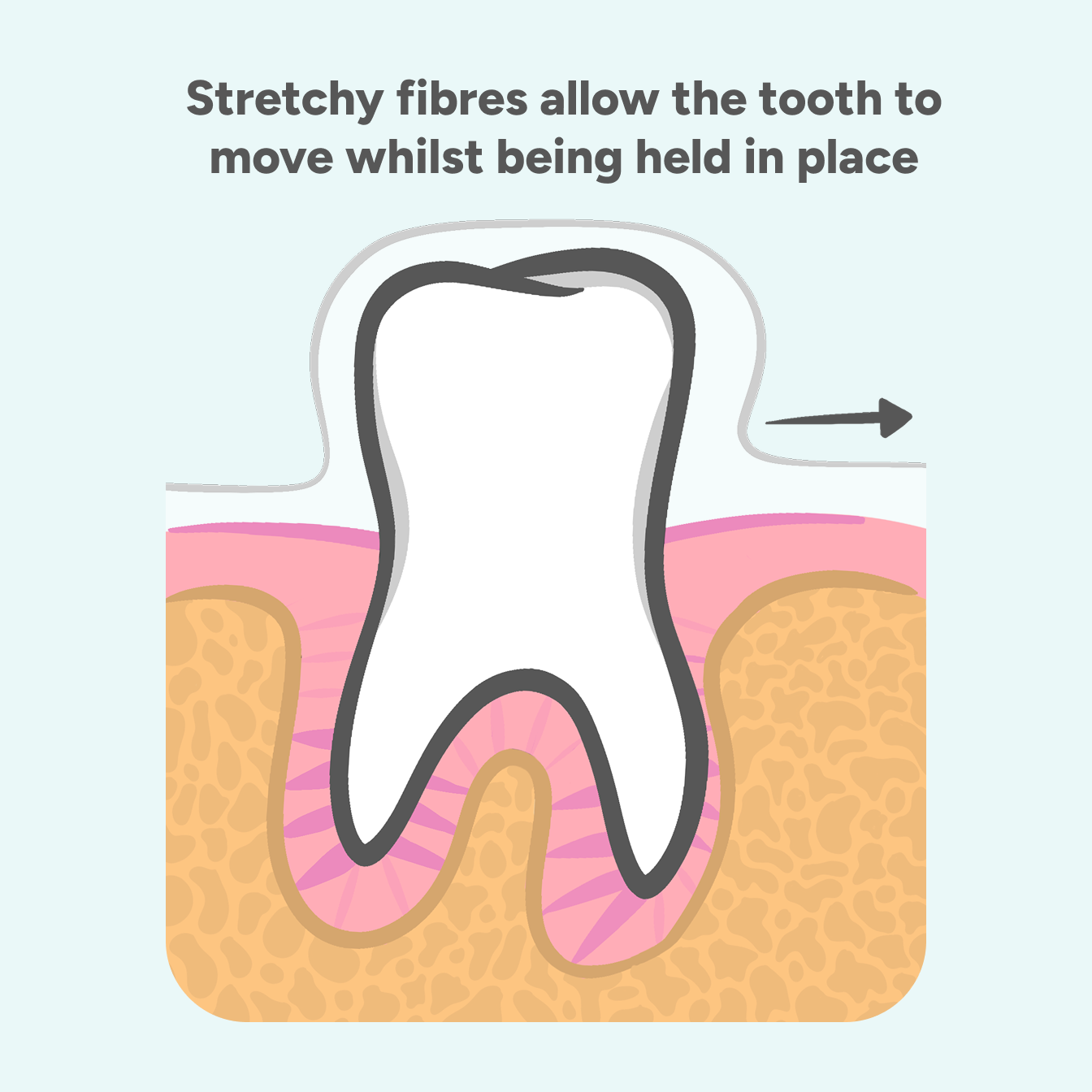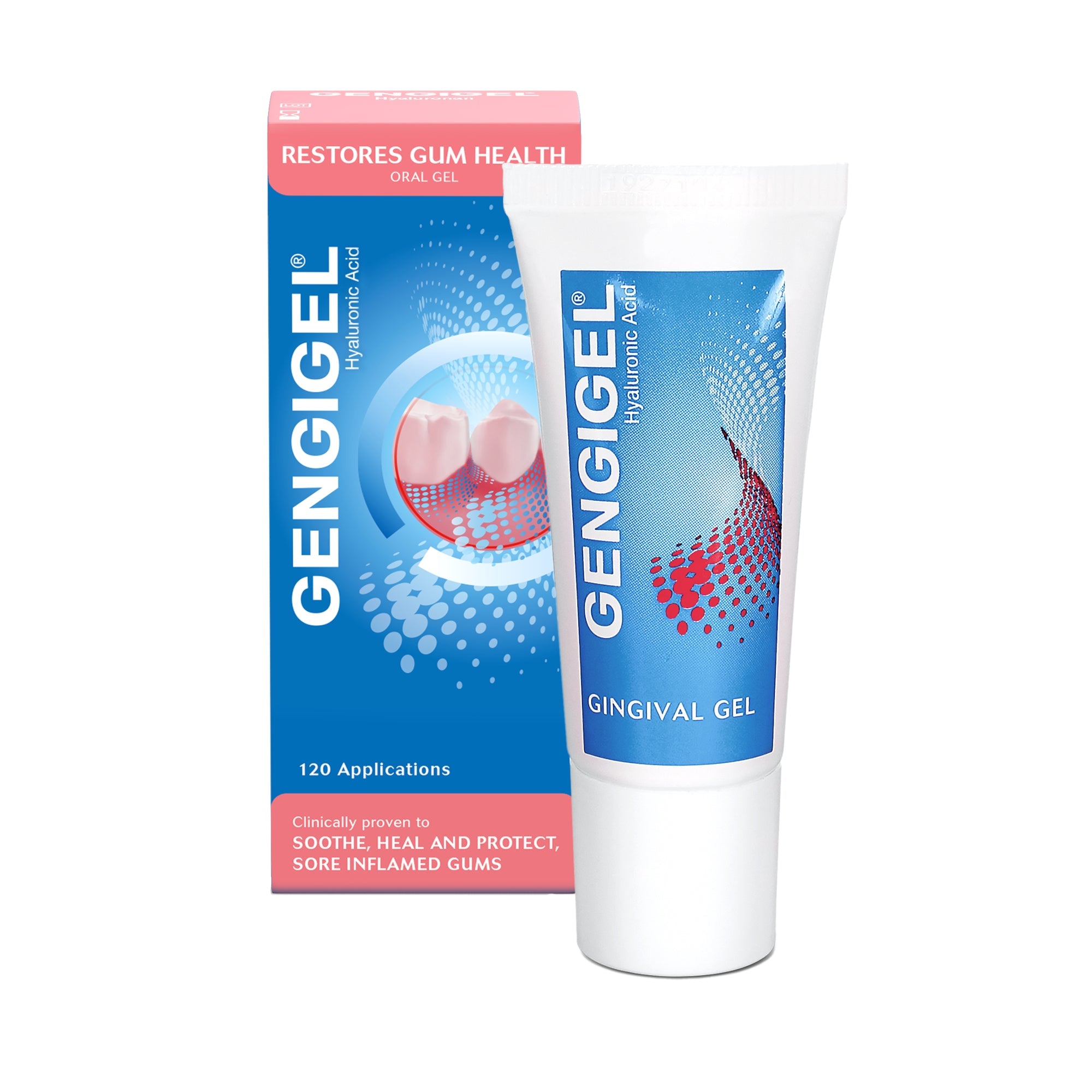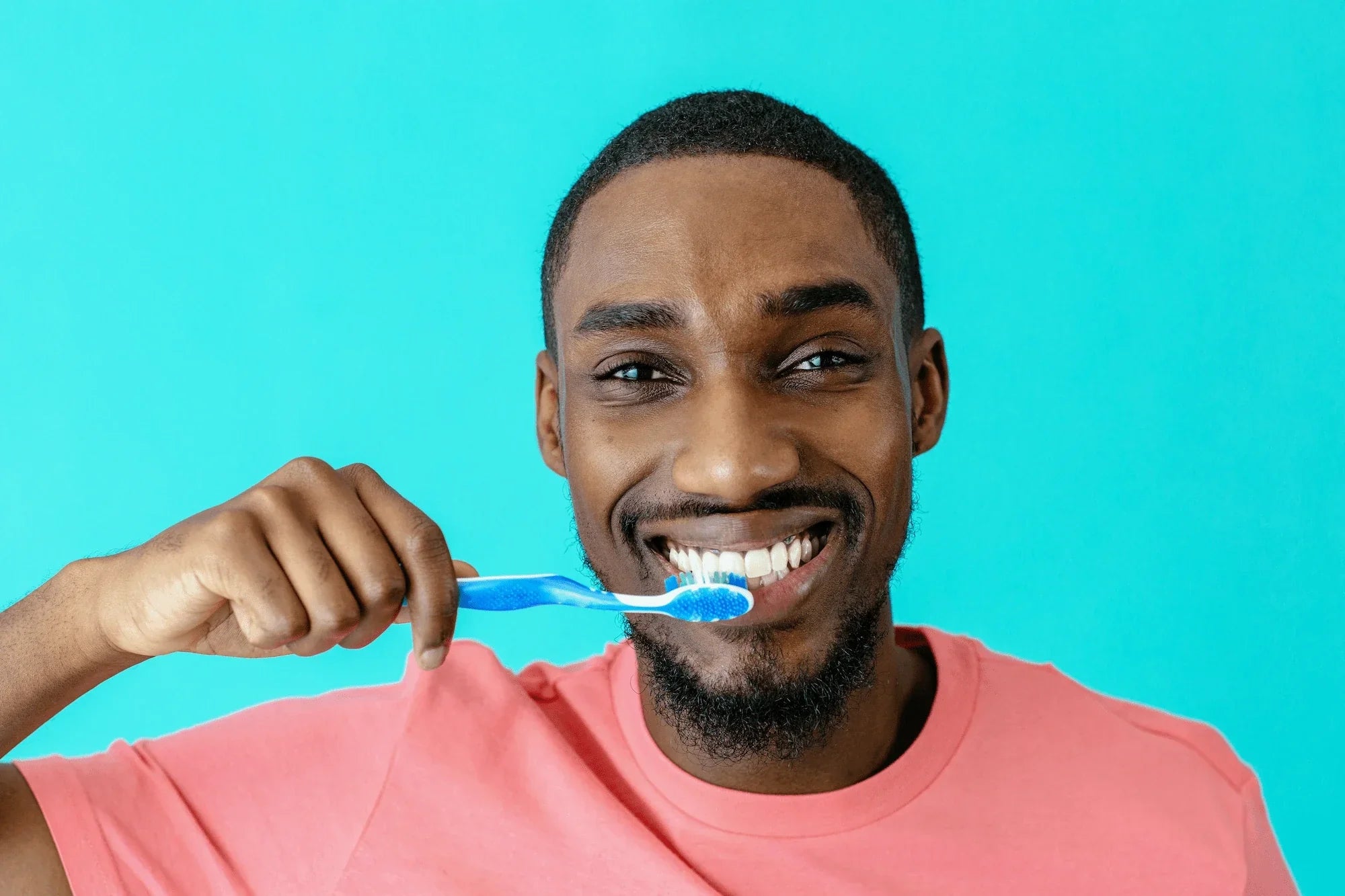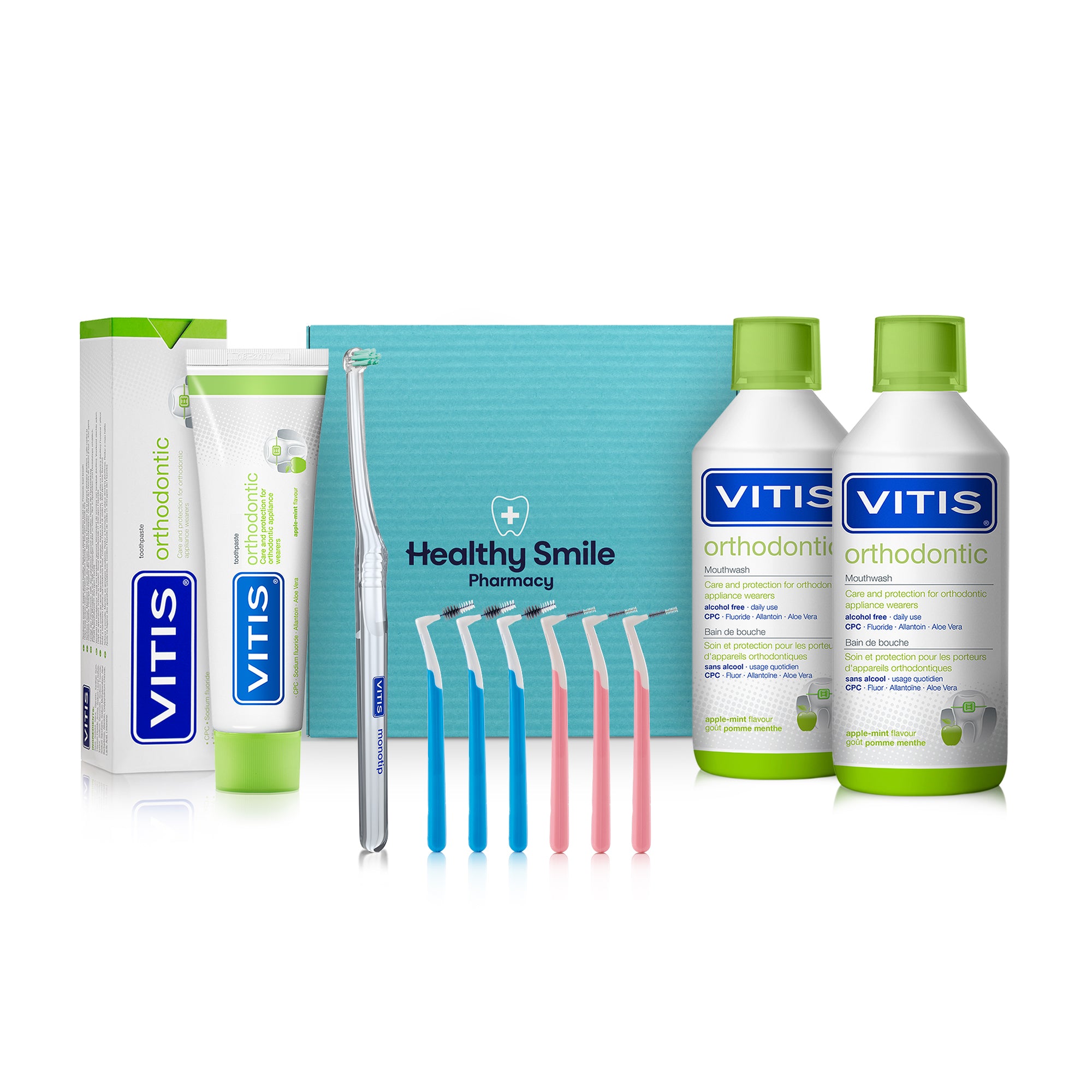Day & night relief from dry mouth! Let XyliMelts moisturise and bring relief to your dry mouth! Shop Now

3 Reasons You Need to Brush Three Times a Day with Braces
Why do teeth waggle more in aligners?
Let’s solve the question:
You were checking for progress, you nudged your front tooth and it’s waggling.
How? You understood the assignment: keep your teeth and gums tip top. You did what you were told, followed the drill: there’s no plaque on you! Gums? A healthy pink.
What’s going on? Is your tooth about to fallout?
In your head, worst case scenarios bubble up (we’re all overly dramatic at times). The tooth’s root snapped under the pressure of the aligners! The gaps your orthodontist created are too big to keep your teeth in their sockets!
This is not what you signed up for on a wet Wednesday afternoon.
It’s ok, take a breath – that wiggle's all part of the orthodontic plan!
What is the periodontal ligament – the PDL?
The secret superpower behind your aligners? The periodontal ligament
Your PDL keeps your teeth in your mouth – it IS the waggle!
The job of the PDL’s stretchy fibres is to connect tooth root to bone. The PDL sits between the tooth and the alveolar bone. That’s why your teeth wiggle – they're suspended by the PDL – not jammed into your jawbone!
Phew, glad we got that straight.
In aligners, the PDL helps make new spaces and closes the gaps
In your aligners, chemical messages from the PDL helps new space in bone to open, and it helps close old spaces.
Your teeth have always had a wiggle but in aligners, at times, there’s a little extra wiggle room around your teeth, particularly for a while after new tray day.
Hang about, though ...

How does the PDL remodel bone?
It’s a case of a squash and a squeeze
Your periodontal ligament dials up chemicals to dissolve or make bone, all without a laboratory in sight. It’s enough to impress the cleverest of chemists.
As your aligner sits on your teeth, it places gentle pressure on your teeth. This pressure transfers to your PDL. It can stand pressures beyond 50kg per tooth – that's two fully packed holiday suitcases. But your aligner only puts a maximum of around 150g on a tooth – that's the force of a tennis ball resting on your fingertip.
But that gentle, controlled pressure is what squashes or pulls on the PDL. Where it pulls, the bone will form and where it squashes, the bone will dissolve.
It’s an amazing biological project manager delivering your glow up!

When your aligners hurt, blame your PDL!
There is a drawback, and you’ve probably noticed its effects
Your PDL also dials up a chemical called prostaglandin. This chemical messenger makes nerves more sensitive.
We know, it’s a definite boo hiss moment for the PDL - and for ‘moment’, read a few days after you’ve slipped in the new tray. That prostaglandin has set your nerves to high alert.
That’s when we may need to step in and manage the discomfort:
· Sip iced water
· Eat soft food · Massage with a Monotip Brush · Help heal gums with Gengigel
· Don’t suffer unnecessarily if we can take a painkiller – always follow the instructions on the packet!
The silver lining is that it shows your PDL is busy in there!

How can I be sure my PDL is healthy in aligners?
The PDL has its superpowers, but it also has its kryptonite: plaque
Looking after your PDL means looking after your gums. That’s right – that's why your orthodontist and your oral health conscience keep nagging! If you’re using the Aligner Brace Daily Care kit three times a day, congratulations, you’re looking after your gums with VITIS Orthodontic’s gold standard medical grade solutions and formulations
It’s plaque’s worst nightmare but your BFF – ok, maybe not forever, but until the end of aligners! (In the future you have the tooth-friendly whitening delights of a Retainer Complete Care Kit – ting!).
· Plaque busting ingredients to give your gums optimal care
· Plaque bacteria stopped in its tracks before it irritates your gums
· Reduce gum inflammation if they do flare up at adjustment time
· Alcohol free formulas to care for sensitive oral tissues rather than stress them

Why is it important to keep plaque at bay and protect your PDL
Inflamed gums from poor plaque removal are driven by bacteria. This bacteria-led inflammation can spread to the PDL and stop it doing its aligner-helpful work.
Uncontrolled, these circumstances mean:
· Bone loss speeds up, bone production slows down
· Tooth roots may be reabsorbed
· The PDL’s suspension is no longer stable
· Your aligners puts pressure on the weakened structures
· Teeth can loosen
· The effects on the PDL might be irreversible
*swallows hard
Let’s back up and away from that scenario.
· It’s why we say, keep brushing with VITIS Orthodontic · VITIS Orthodontic Toothpaste is semi-liquid so it helps hunt down plaque in hard-to-reach places. · Interprox Interdental Brushes get in and around gaps - plaque has no hiding place · A Monotip Brush brushes the gumline keeping gums clean and protected · Add in an Orthodontic Access Toothbrush and plaque loses the battle
· Mid-morning and mid-afternoon, just as plaque thinks it can get a grip of your gums, VITIS Orthodontic Mouthwash swooshes in to keep anti-microbial properties topped up.

How will I know if my teeth waggling is a concern while I’m wearing aligners?
When the wiggle turns to wobble
No tooth should feel floppy during aligner treatment. You shouldn’t be able to tilt or twist them.
Talk to your orthodontic team if you experience:
- A tooth that feels very loose
- Red, swollen gums that aren’t responding to additional cleaning and care
PDL: the spring in your aligner progress
Your brushing skills, your orthodontist and your PDL are the glow-up squad perfecting a smile to celebrate. Equip like a professional with a Aligner Brace Daily Care Kit. It’s the medical grade care you need during orthodontic treatment and let’s just say, if keeping tip top oral health in aligners was an orthodontic sport, with this kit, you’d be gold on the podium.
Science, orthodontic specialism, your commitment and biology – brilliant, right?
Keep brushing!






